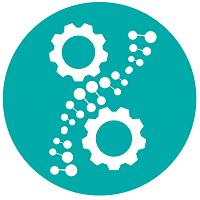Manufacturing & Analytical Characterization
Hot Topic: CMC and Manufacturing Strategies for Lipid Nano-Particles Enabled Medicines
Strategies for Manufacturing and Analysis of Lipid-Based Nanomedicines and Vaccines
Monday, November 10, 2025
4:00 PM - 4:15 PM CT
Location: 220 / Cantilever Room

Mitra Mosharraf, PhD, M.B.A. (she/her/hers)
CSO
HTD Biosystems Inc
Livermore, California
Hot Topic Speaker(s)
In recent years there has been an increase in development of lipid-based nanomedicines such as lipid nanoparticles (LNP) following the recent approvals of mRNA-based vaccines and siRNA therapeutics. There are common issues that are important for the development of these nanostructures. For example, there are regulatory requirements for understanding the amount of payload and its location within the nanoparticle, as well as the particle size and entrapment efficiency. There has also been an increase interest in development of thermostable LNP-based vaccines to enhance stability at room temperature. In this symposium we will focus on three parts:
1) Composition and design of lipid-based vaccines and nano-medicines
2) Analytical QbD approaches for characterization of LNPs including particle size characterization by dynamic light scattering and flow imaging, lipid composition and surface charge, and characterization of the amount of payloads in the nano-carrier
3) Common manufacturing processes and current approaches to improve stability of lipid-based nanomedicines for example by freeze-drying.
There are regulatory requirements for characterization to ensure safety, stability and efficacy. This requires analytical QbD approaches to be included in the process and many scientists might not know how to characterize or manufacture a combination of lipid nanoparticle with its payload. This symposium will address this gap.
1) Composition and design of lipid-based vaccines and nano-medicines
2) Analytical QbD approaches for characterization of LNPs including particle size characterization by dynamic light scattering and flow imaging, lipid composition and surface charge, and characterization of the amount of payloads in the nano-carrier
3) Common manufacturing processes and current approaches to improve stability of lipid-based nanomedicines for example by freeze-drying.
There are regulatory requirements for characterization to ensure safety, stability and efficacy. This requires analytical QbD approaches to be included in the process and many scientists might not know how to characterize or manufacture a combination of lipid nanoparticle with its payload. This symposium will address this gap.
Learning Objectives:
- Describe different analytical QbD approaches to use for characterization of lipid-based nano-medicines and vaccines
- Describe the important components in the composition and why they matter
- Understand the challenges with manufacturing processes involved for manufacturing and control of quality of these constructions and how to mitigate risk to prevent instability and increase process efficiency ensuring quality


